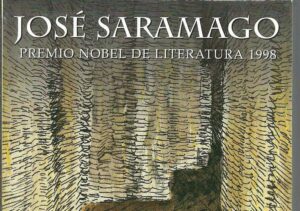About the book
«He rhymes with more truth and naturalness than the vast majority of his comrades in arms. He never truncates a verse for a rhyme or keeps running in the hope of finding it. And when he does not indulge in those rhymes or even when he does so obsessively, his lyrics flow with such parsimony in his songs that their reading becomes easy and musical. Song by song, a story is told to us directly, without flourishes and in such a careful way that the music that elevates it emerges in the reading itself, even if one does not know the melody of it. For this reason, this anthology of Simon’s songbook (which, fortunately, also includes the lyrics of the compositions of the musical by The Capemanon which he collaborated with Nobel Prize winner Derek Walcott) reads like a novel or a biography, although it is not strictly autobiographical.»
Ray Olson, Booklist
«Letters it is both encyclopedic and, like any transcription of lyrics from a songbook, necessarily incomplete. It begins with the seemingly simple songs of the unforgettable duo Simon & Garfunkel, through the lush explorations of his early solo work, to the brilliant but often inscrutable blockbusters, Graceland y Rhythm of the Saints, and, finally, even his lesser-known works of more recent creation. Perhaps the most surprising thing about reading these lyrics as a text is how simple they often seem, as David Remnick points out in his brief but magnificent introduction, given that their power and poetry are inextricably linked to the music they accompany. . Still, who knows what came first? What is obvious is that Simon writes his lyrics thinking about the music and vice versa. (This could explain why he has never published the songbook before in his long career.) “You have to be a good host and pay attention to people’s attention span,” Remnick quotes regarding the process of composing the songs. Simon songs. “They’re not going to come listen to you and start racking their brains right away. “There are many things and it can be overwhelming: the music, the rhythm, all the information that the brain is processing.” The depth of psychological understanding that such a realization denotes on the part of the attentive singer-songwriter, not to mention the generosity of spirit, is evident throughout this definitive anthology. Although they cannot be dissociated from the music that accompanies them, they constitute an instrumentally important document to bring us closer to what is possibly the best composer of popular music of our time.
Jesse Wegman, The Observer
BIOGRAPHICAL NOTE
As Simon himself refers to Robert Hilburn in the profile that he drew of the bard, this is one of the greatest composers and singers of Western popular music of the 20th century: a self-conscious man (due to his height), a star with turbulent loves. , a notable egomaniac, a tireless composer of songs that are now part of the cultural heritage of humanity; In addition to being a consummate tireless joker, he is also an inseparable icon of a New York through whose old and uncorrupted corners one can hear the psychophonies of his melodies; but he is also, among many other things, a learned ayahuasca taster. And, in the absence of a good memoir or an unauthorized biography, there may be no better way to approach such a multifaceted character than through the songbook that attests to the artistic magnitude of his work, in order to decipher the fascinating personality of so elusive singer-songwriter, despite being one of the protagonists in the history of popular music, in capital letters, of the last five decades.
It would be Simon himself who would decide the matter by saying: «Why do I need a biography or a memoir? My life doesn’t matter. “It’s the songs that matter.” In Bono’s words: “You realize that great songs can never be fully explained,” so, in the absence of a good ayahuasca session with good old Paul, we will have to confirm with what he shares with us through of his indelible songs.
Source: https://algunoslibrosbuenos.com/paul-simon-letras-1964-2016


